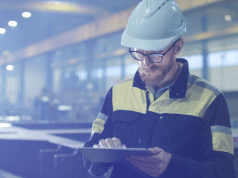Machine learning has the potential to revolutionize the machining process by automating many of the tasks that are currently done manually. By using machine learning algorithms, factories can streamline their production processes and improve quality while reducing costs.
What is machine learning and why do we need it for fully automated machining
Machine learning is a branch of artificial intelligence that deals with the design and development of algorithms that can learn from and make predictions on data. These algorithms are able to automatically improve given more data. We need machine learning for fully automated machining because it is the only way to get machines to truly learn and understand the manufacturing process. With machine learning, we can program machines to constantly adapt and improve their performance over time. This will help improve the speed and efficiency of certain machines such as conveyor belts or conveyor belt winders while reducing the amount of maintenance needed to care for these machines. This will allow us to achieve true automation in machining, where machines can operate independently and without human intervention.
How does machine learning work and what are its benefits
Machine learning algorithms learn from data by building models that make predictions. This is beneficial for automated machining because it means that the more data the algorithm has, the better it will be at detecting, classifying, and predicting problems with machine tools. The benefit of using machine learning for automated machining is that it can greatly improve the accuracy of predictions, making the manufacturing process more efficient and less error-prone. In addition, machine learning can automate the process of feature selection, which is the process of choosing which input variables to use in a predictive model. This is important because it can help us reduce the complexity of our models and make them more interpretable.
The role of machine learning in automated machining
Machine learning will play a vital role in automated machining, as it will be used to automate the process of feature selection. In addition, machine learning will be used to constantly monitor and optimize the manufacturing process. By doing so, we can ensure that our machines are always operating at peak efficiency and that they are producing products that meet our quality standards. The increased accuracy, speed, and efficiency that come with using machine learning for automated machining make it the ideal solution for fully automating the machining process.
How will machine learning be used to automate machining processes?
In order to fully automate the machining process, machine learning will be used to detect problems with machine tools and predict how to fix them. The benefits of using machine learning for this purpose include increased accuracy, speed, and efficiency. Machine learning algorithms are able to automatically improve given more data, which means that the more data the algorithm has, the better it will be at detecting and predicting problems with machine tools. In addition, machine learning will be used to monitor the quality of products produced by our machines. By doing so, we can ensure that only products that meet our quality standards are produced.
The future of machine learning and automated machining
The future of machine learning and automated machining is very exciting. We believe that machine learning will play a vital role in the continued development of fully automated machining. With machine learning, we can automate the process of feature selection and optimize the manufacturing process. We believe that machine learning will help us achieve true automation in machining, where machines can operate independently and without human intervention.
Machine learning could be the key to creating a fully automated machining process. It can be used to detect problems with machine tools, predict how to fix them, and monitor the quality of products produced by our machines. The benefits of using machine learning for automated machining include increased accuracy, speed, and efficiency. Going forward, machine learning will play a vital role in the continued development of fully automated machining. With machine learning, we can automate the process of feature selection and optimize the manufacturing process. We believe that machine learning will help us achieve true automation in machining, where machines can operate independently and without human intervention.











